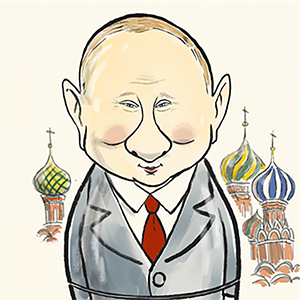Lori Borgman: The intersection of bunnies, Christmas and Easter
Published in Mom's Advice
On a cold spring day years ago, young neighbor children found a small, dead bunny in their yard. They ran inside to tell their mother about the discovery. She went outside with the children to view the pitiful sight.
When the woman’s husband came home that evening, unbeknown to the children, he disposed of the bunny. The next day, the children went outside and discovered the dead bunny was gone. They rushed inside to ask their mother what could have happened.
She told them the bunny had been resurrected.
My friend saw the circumstances as a teachable moment for Easter.
For the record, the children all grew up to be healthy well-adjusted adults who are productive members of society.
For several hundred years following the life of Christ, the major holiday on the Christian calendar was Easter. In our times, that is flipped. Last year, Christmas netted $972 billion in retail sales. Easter netted $22 billion, which is paltry in comparison but enough to generate tons of chocolate bunnies and marshmallow Peeps.
Christmas is buoyed not only by commercialism, but by the tender story of a baby born in a manger to a humble peasant couple. Easter is a harder and more gruesome story to teach, let alone market.
Though intense and frightening, the lessons of Easter are relevant for all ages. Suffering and sorrow touch every one of us. Even children. Who doesn’t remember tears shed over the death of a beloved pet? Grief and sorrow over the death a family member or friend can feel unbearable.
In the biblical account, when Jesus was crucified, dead and buried, his friends and followers were crushed to the brink of despair. When Jesus died, their hope died as well.
After they laid his body in the tomb and the stone was rolled in front of it, they all sheltered together. Together in times of sorrow helps. As hopeless as things seemed, the darkness did not swallow them whole, though they may have wished it would.
On the Sunday after Jesus died, Mary Magdalene, a friend and follower who witnessed the crucifixion, went to the tomb in the early morning. The rock had been rolled away and the tomb was empty. As she stood bewildered and sobbing, Jesus appeared to her. She ran to tell the others the good news that Christ had risen from the dead and was alive. This is the origin of “good news.”
When the ever-lengthening Christmas season is over, all the gift-giving and merry making has drawn to a close, how do people often feel? Many experience sadness and melancholy. The clinical name for that is post-Christmas blues.
When Easter is over, people most often feel refreshed and joyful, imbued with the hope of new life and rebirth. When Holy Week appears darkest, light pierces the clouds. Christmas may net the most attention and money, but Christmas and Easter are integral parts of the same narrative. Christmas sets the stage—Easter is “the rest of the story.”
©2025 Tribune Content Agency, LLC










Comments